
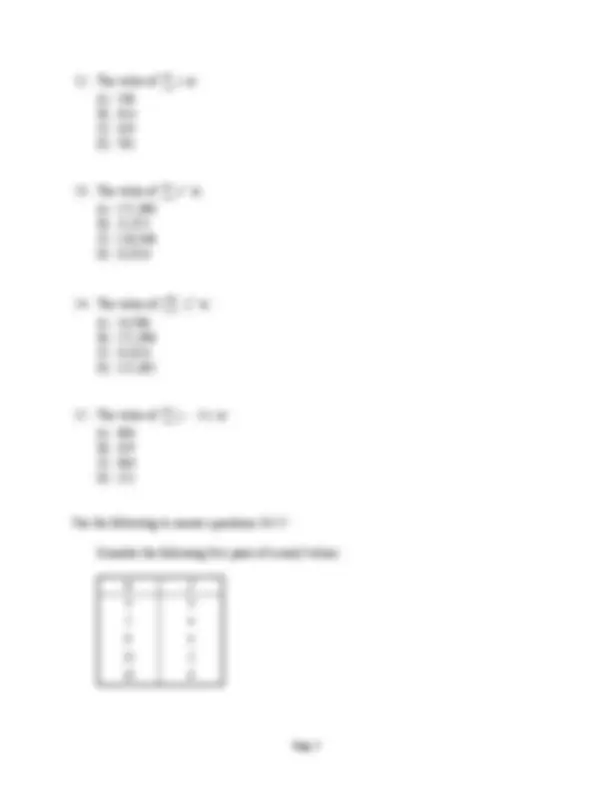
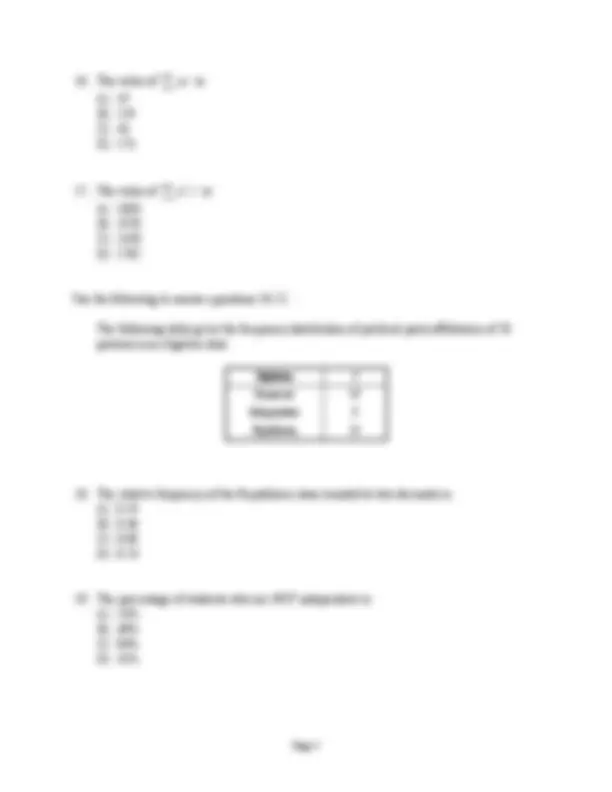
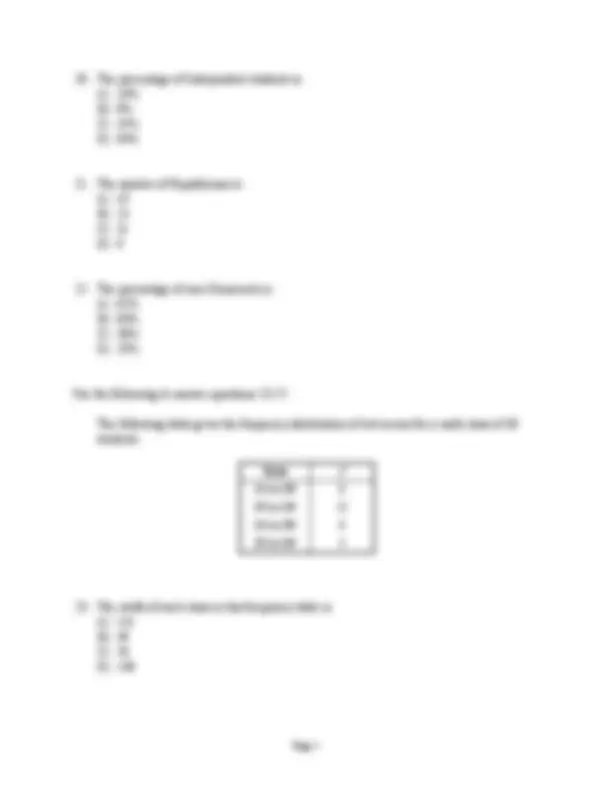
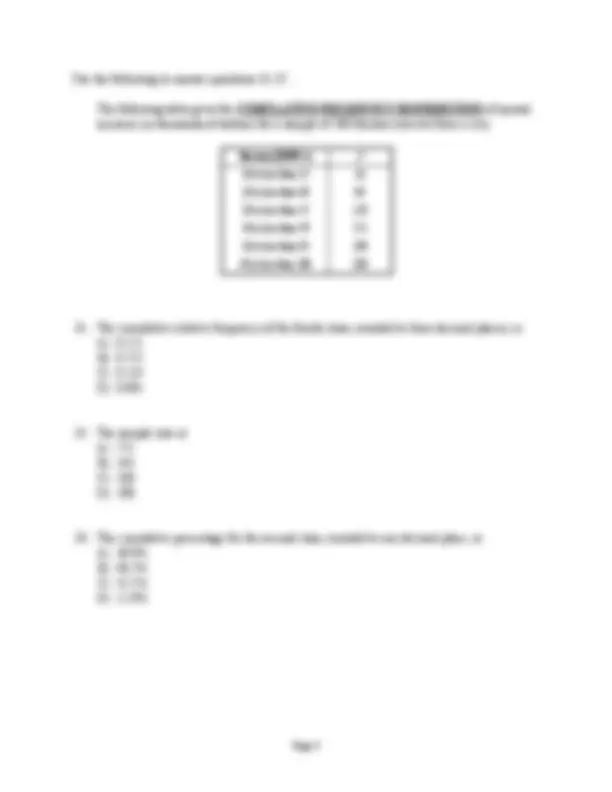
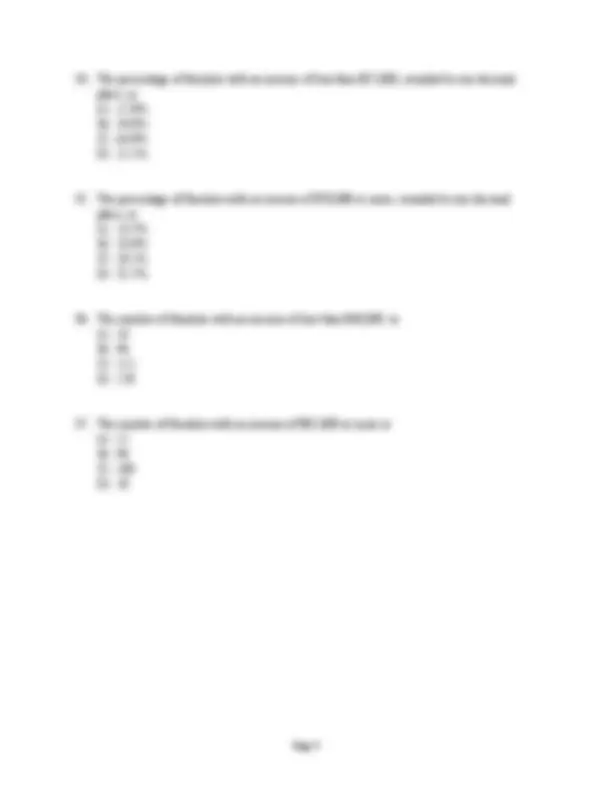
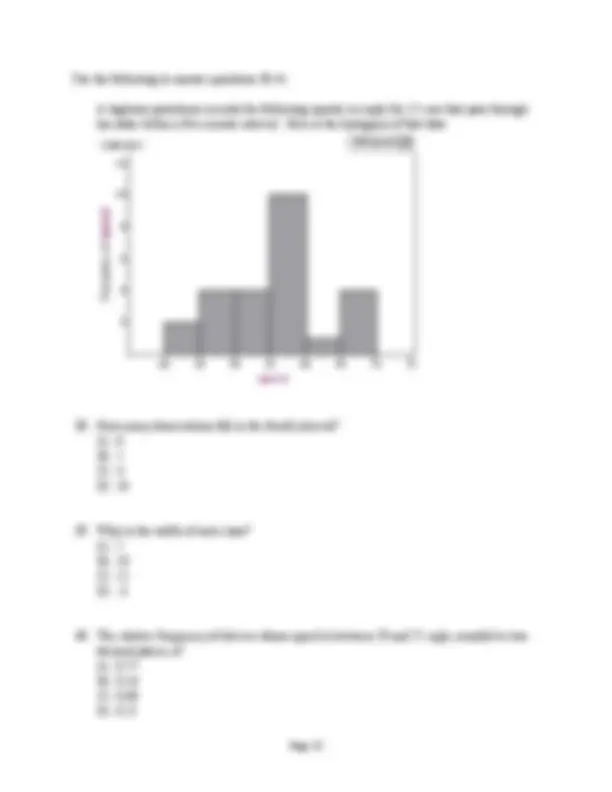
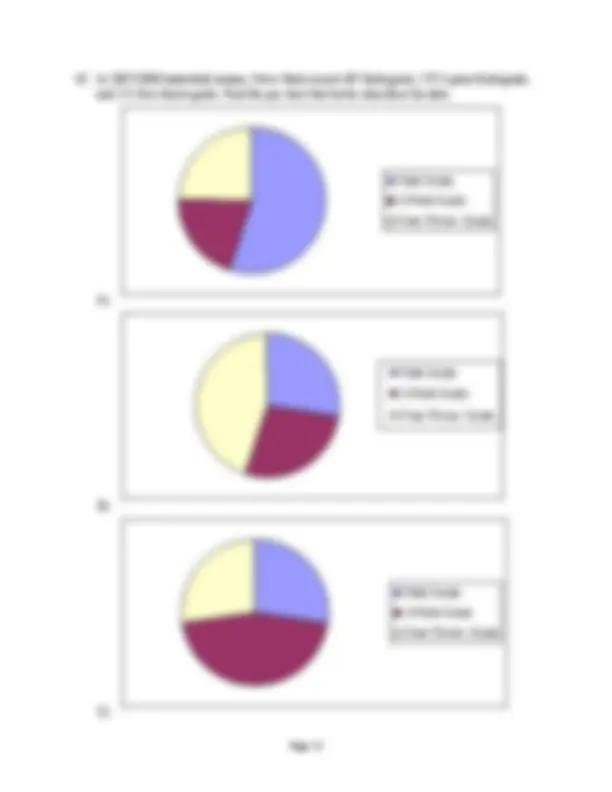
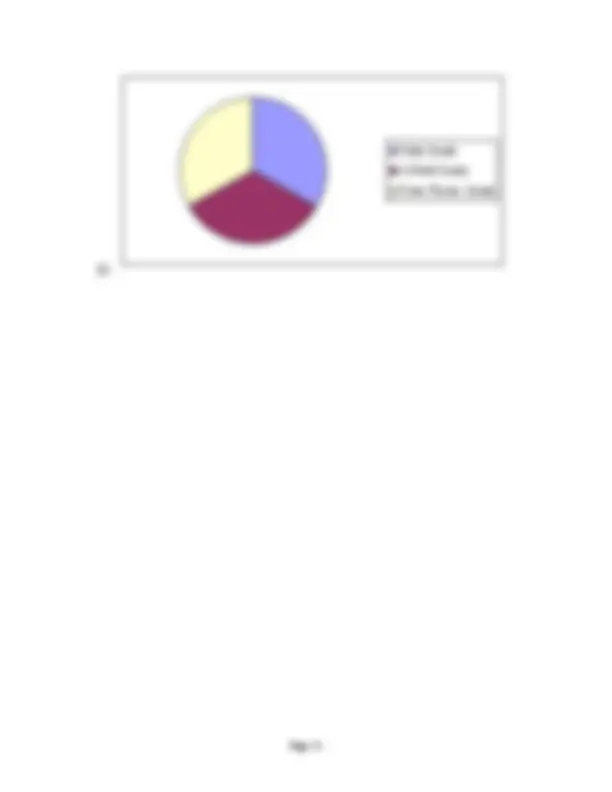
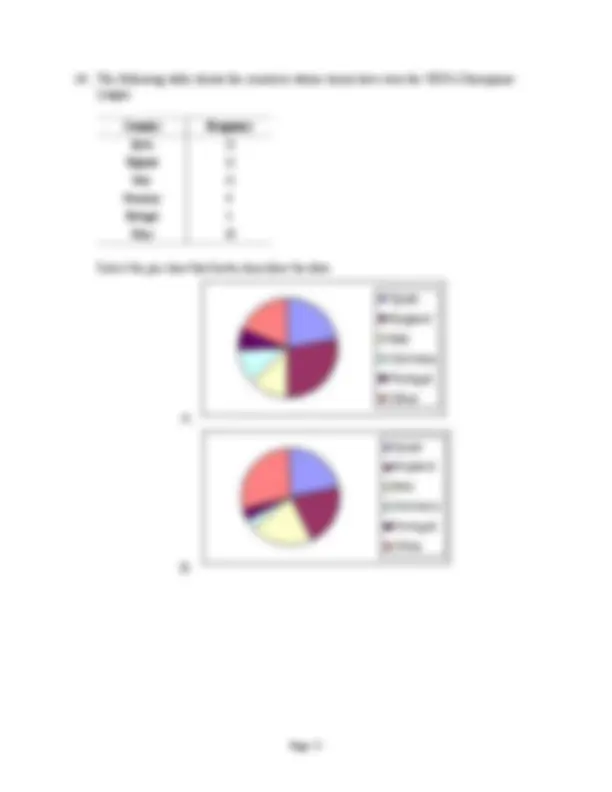
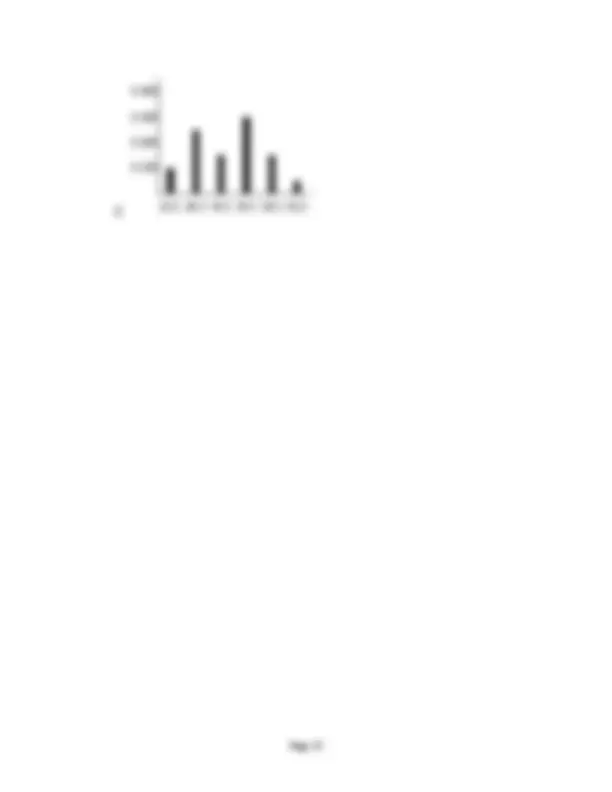
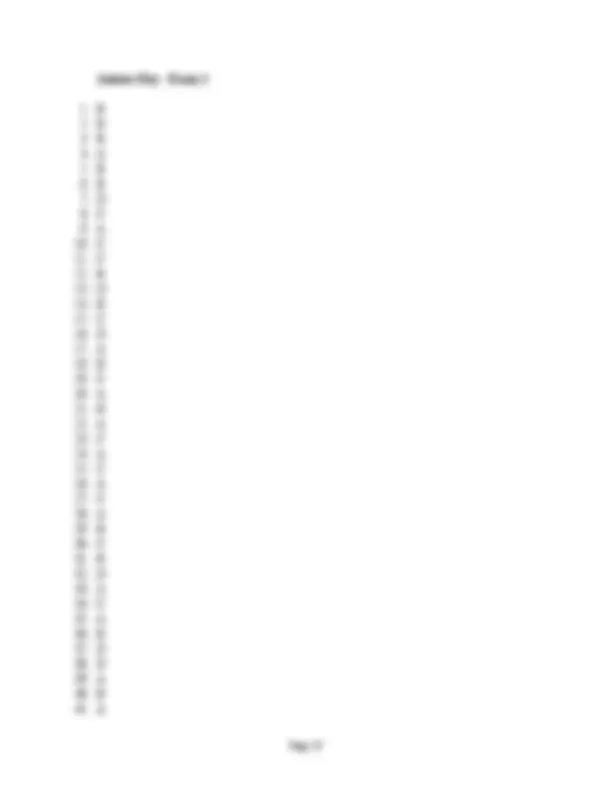



Study with the several resources on Docsity

Earn points by helping other students or get them with a premium plan


Prepare for your exams
Study with the several resources on Docsity

Earn points to download
Earn points by helping other students or get them with a premium plan
Community
Ask the community for help and clear up your study doubts
Discover the best universities in your country according to Docsity users
Free resources
Download our free guides on studying techniques, anxiety management strategies, and thesis advice from Docsity tutors
Material Type: Exam; Professor: Wimberly; Class: Elementary Statistics; Subject: Mathematics; University: University of Mississippi Main Campus; Term: Fall 2011;
Typology: Exams
1 / 20

This page cannot be seen from the preview
Don't miss anything!













Name: ___________________________________ Date: ______________
Use the following to answer questions 28-30. The following table gives the frequency distribution of the number of rooms for a sample of 100 houses. Number of Rooms f 2 15 3 9 4 16 5 25 6 13 7 8 8 14
Use the following to answer questions 31-37. The following table gives the CUMULATIVE FREQUENCY DISTRIBUTION of annual incomes (in thousands of dollars) for a sample of 200 families selected from a city. Income ($1000's) f 10 to less than 25 16 10 to less than 40 96 10 to less than 55 128 10 to less than 70 151 10 to less than 85 180 10 to less than 100 200
Use the following to answer questions 38-41. A highway patrolman records the following speeds (in mph) for 25 cars that pass through his radar within a five-minute interval. Here is the histogram of that data:
Answer Key - Exam 1